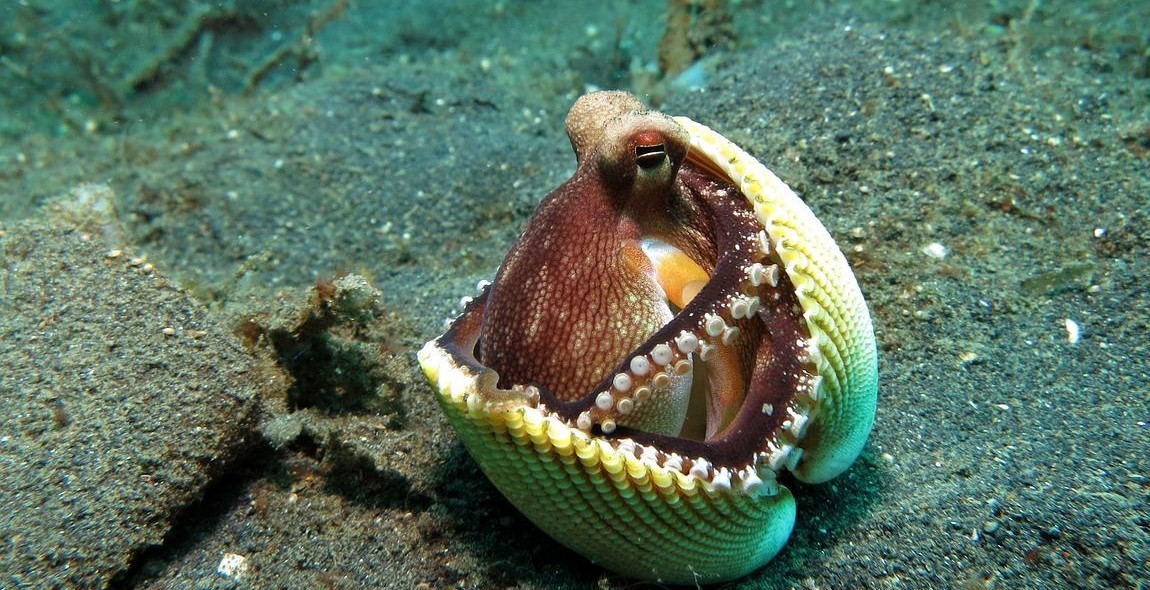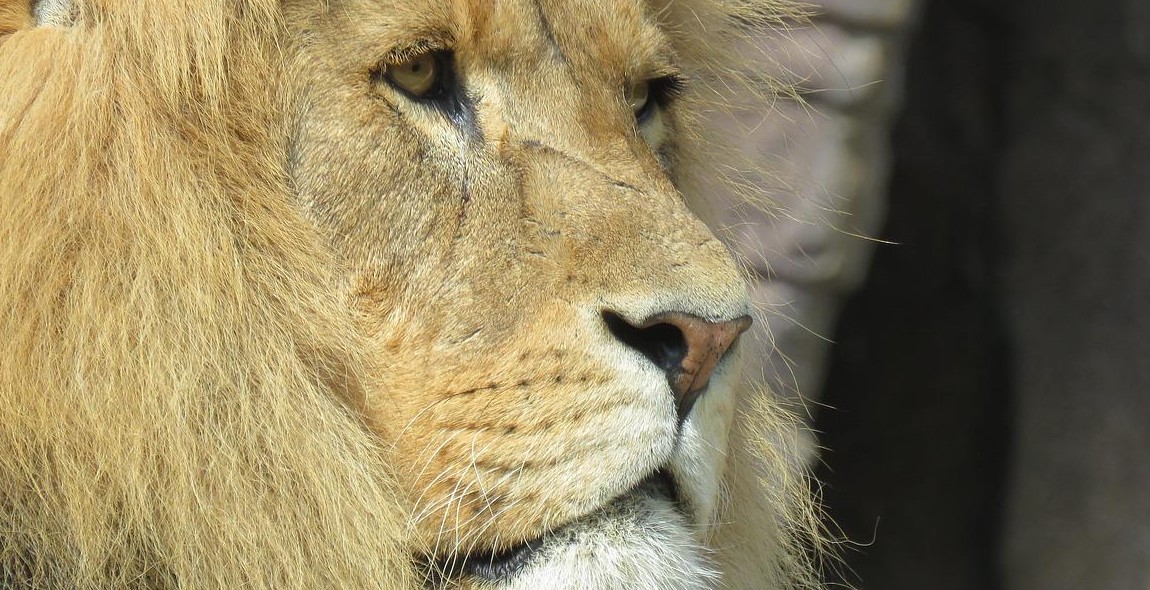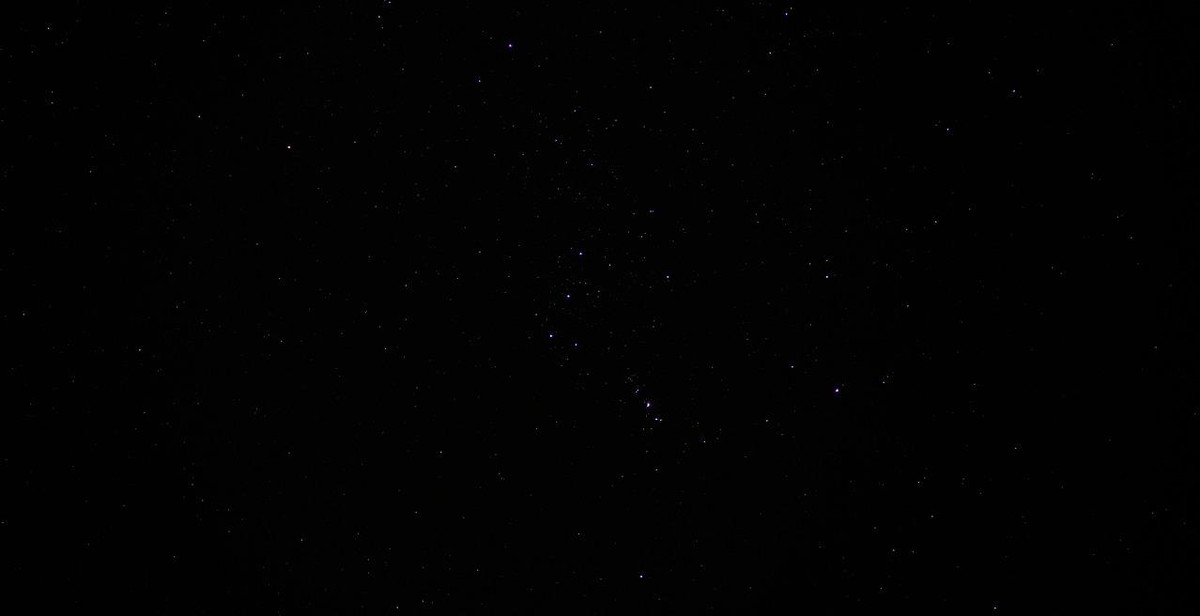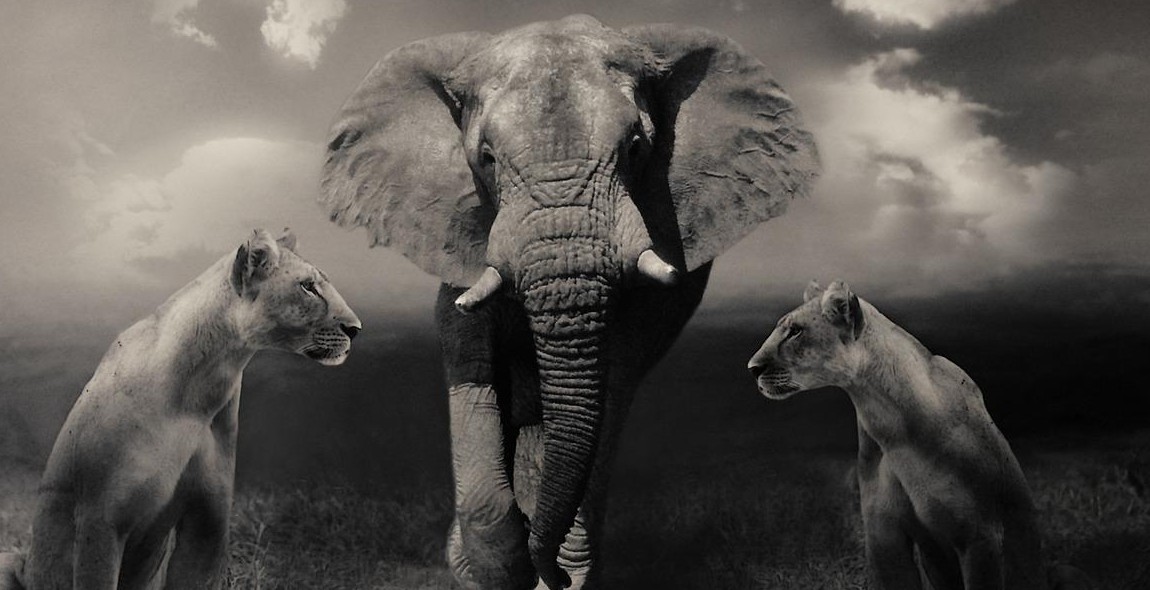Introduction
Welcome to “Photographing Wildlife: Tips and Tricks for Nature Lovers,” where we will explore the fascinating world of wildlife photography and provide you with valuable insights to enhance your skills as a nature photographer. Capturing the beauty and essence of wildlife through photographs is a thrilling and rewarding experience, and this article aims to equip you with the knowledge and techniques necessary to excel in this field.
Whether you are a beginner or an experienced photographer, this comprehensive guide will cover various aspects of wildlife photography, including equipment selection, composition techniques, understanding animal behavior, and post-processing tips. With our step-by-step instructions and practical advice, you will be well-prepared to venture into the wild and capture stunning images of animals in their natural habitats.
Additionally, we will discuss the ethical considerations of wildlife photography, emphasizing the importance of respecting and protecting the subjects and their environment. We believe that responsible wildlife photography can contribute to conservation efforts and raise awareness about the need to preserve our planet’s biodiversity.
Throughout this article, we will share expert tips and tricks from seasoned wildlife photographers, along with inspiring examples of their work. So, whether you are planning a safari adventure or simply enjoy observing wildlife in your local surroundings, this guide will empower you to take breathtaking wildlife photographs and create lasting memories.
Choosing the Right Equipment
When it comes to photographing wildlife, having the right equipment can make all the difference in capturing stunning shots. Here are some key considerations for choosing the right camera, lens, tripod, and accessories for your wildlife photography adventures:
Camera
1. Full-Frame DSLR: A full-frame DSLR camera is ideal for wildlife photography due to its larger sensor size, which allows for better image quality and low-light performance. Look for models with high-resolution sensors and fast autofocus capabilities.
2. Mirrorless Camera: Mirrorless cameras are gaining popularity among wildlife photographers due to their compact size, silent shooting modes, and advanced autofocus systems. Look for models with high burst rates and excellent image stabilization.
Lens
1. Telephoto Lens: A telephoto lens is essential for capturing wildlife from a distance. Look for lenses with focal lengths of at least 300mm or longer to bring distant subjects closer. Image stabilization is also crucial to minimize camera shake.
2. Zoom Lens: A zoom lens with a wide focal range can be versatile for capturing wildlife in different situations. Look for lenses with a wide aperture range and fast autofocus to ensure sharp images.
Tripod
1. Sturdy and Lightweight: Invest in a tripod that is both sturdy and lightweight for easy portability during your wildlife photography excursions. Look for materials like carbon fiber or aluminum, and ensure it can support the weight of your camera and lens.
2. Quick Release Plate: A tripod with a quick release plate allows for quick and secure attachment and detachment of your camera. This feature is especially handy when you need to switch between handheld and tripod shooting quickly.
Accessories
1. Camera Bag: A durable and well-padded camera bag is essential for protecting your equipment while in the field. Look for a bag with compartments to keep your gear organized and easily accessible.
2. Extra Batteries and Memory Cards: Wildlife photography often involves long hours in the field, so having extra batteries and memory cards is crucial. Invest in high-quality, high-capacity batteries and fast memory cards to avoid missing out on capturing those special moments.
3. Lens Filters: Consider using lens filters to enhance your wildlife shots. A polarizing filter can reduce glare and enhance colors, while a neutral density filter can help achieve longer exposures in bright conditions.
4. Remote Shutter Release: A remote shutter release allows you to capture wildlife shots without touching the camera, minimizing the risk of camera shake. This accessory is especially useful for long exposure or wildlife shots requiring patience and precision.
5. Lens Cleaning Kit: Keep your lenses in top condition with a lens cleaning kit. Dust, dirt, and smudges can affect image quality, so regularly cleaning your lenses ensures sharp and clear wildlife photos.
Remember, the right equipment is essential for successful wildlife photography. Consider your shooting style, budget, and specific needs when choosing your camera, lens, tripod, and accessories. With the right gear in hand, you’ll be well-prepared to capture breathtaking wildlife moments.

Understanding Wildlife Behavior
When it comes to photographing wildlife, having a thorough understanding of their behavior is essential. By researching the species, observing from a distance, and learning their habits, you can increase your chances of capturing stunning and authentic wildlife photographs. Here are some tips to help you gain a deeper understanding of wildlife behavior:
Researching the Species
Before venturing out to photograph wildlife, it’s important to do your homework. Researching the species you hope to capture will provide valuable insights into their behaviors, habitats, and movement patterns. Here are some key points to consider:
- Habitat: Learn about the natural habitat of the species you are interested in photographing. Understanding their preferred environments will help you locate and approach them effectively.
- Feeding habits: Find out what the species feeds on and when they are most active. This knowledge will enable you to anticipate their movements and position yourself for the perfect shot.
- Social behavior: Some wildlife species have complex social structures and interact with others in unique ways. Understanding their social behavior will allow you to capture interesting interactions and behaviors.
- Reproductive patterns: Familiarize yourself with the breeding seasons and mating rituals of the species. This knowledge can help you capture intimate and unique moments in their lives.
Observing from a Distance
When photographing wildlife, it’s crucial to maintain a safe distance to avoid disturbing or endangering the animals. Here are some tips for observing from a distance:
- Use binoculars or telephoto lenses: Invest in good quality binoculars or telephoto lenses to observe wildlife from a safe distance. These tools allow you to get a closer look without intruding on their space.
- Stay hidden: Blend into the environment by wearing appropriate camouflage clothing and avoiding sudden movements or loud noises. This will help you remain unnoticed by the wildlife and capture natural behaviors.
- Respect their space: Give wildlife plenty of room to move freely and behave naturally. Avoid cornering or chasing them, as this can cause stress and alter their behavior.
Learning their Habits
By observing wildlife regularly, you can learn their habits and predict their behavior, increasing your chances of capturing remarkable photographs. Here’s how to do it:
- Patience is key: Wildlife photography requires patience. Spend time in their habitat, patiently observing their routines and interactions. Over time, you’ll get a better understanding of their habits.
- Study their movement patterns: Take note of the paths and routes wildlife species use to move around their habitat. This knowledge will help you anticipate their movements and position yourself for the best shots.
- Observe during different times of the day: Wildlife behavior can vary depending on the time of day. Explore the early morning, late afternoon, and even nighttime to witness different behaviors and capture unique photographs.
- Document your observations: Keep a journal or create a digital log of your wildlife observations. Note down interesting behaviors, feeding patterns, or any other observations that can aid your future photography sessions.
By thoroughly researching the species, observing from a distance, and learning their habits, you’ll be well-equipped to photograph wildlife with confidence and respect for their natural behavior. Understanding wildlife behavior is not only essential for capturing incredible photographs but also for promoting conservation and raising awareness about the importance of protecting these magnificent creatures.

Finding the Perfect Location
When it comes to photographing wildlife, finding the perfect location is crucial. The right environment can make all the difference in capturing stunning images of animals in their natural habitat. Here are some key factors to consider when searching for the ideal location:
National Parks and Wildlife Refuges
National parks and wildlife refuges are often the go-to destinations for nature photographers. These protected areas are designed to preserve the natural beauty of the land and provide a safe haven for wildlife. National parks offer a wide range of ecosystems, from lush forests to expansive grasslands and rugged mountains. They are home to a diverse array of species, making them excellent choices for capturing unique wildlife images.
Wildlife refuges, on the other hand, are specifically designated to protect and enhance the habitat for wildlife. These areas often have specific management practices in place to ensure the well-being of the animals. Photographers can take advantage of the carefully maintained habitats to capture intimate moments between animals or witness rare behaviors.
Local Nature Reserves
If you’re looking for a location closer to home, local nature reserves can be fantastic options. These smaller, community-managed areas are often rich in biodiversity and provide ample opportunities for wildlife photography. Local nature reserves are typically more accessible and less crowded than national parks, allowing for a more intimate and personal experience with the wildlife.
Many local nature reserves also offer guided tours or have knowledgeable staff who can provide information about the best times and locations to spot specific animals. These resources can be invaluable for photographers looking to capture elusive or rare species.
Migration Routes and Breeding Grounds
Another strategy for finding the perfect location is to focus on migration routes and breeding grounds. Many species follow specific migration patterns, congregating in certain areas during their journey. By researching these routes, you can pinpoint the best locations to observe and photograph large gatherings of animals.
Similarly, identifying breeding grounds can lead to incredible photographic opportunities. During the breeding season, animals engage in courtship displays, territorial battles, and nurturing behaviors. These moments are not only visually captivating but also offer insights into the life cycle of the wildlife you’re photographing.
When planning your photography expedition, consider consulting migration maps, birding guides, or wildlife organizations to determine the most promising locations along migration routes or known breeding grounds.
In conclusion, selecting the right location is essential for capturing stunning wildlife photographs. Whether you choose to explore national parks, wildlife refuges, local nature reserves, or focus on migration routes and breeding grounds, each option presents unique opportunities to observe and photograph animals in their natural environment.

Mastering the Exposure Triangle
Understanding the exposure triangle is essential for capturing stunning wildlife photographs. It involves balancing three crucial elements: aperture, shutter speed, and ISO. Mastering these settings allows you to control the amount of light entering your camera and achieve the desired exposure for your wildlife shots.
Aperture
Aperture refers to the size of the lens opening through which light enters the camera. It is measured in f-stops, such as f/2.8, f/5.6, or f/11. A wider aperture (smaller f-number) allows more light to enter, resulting in a shallow depth of field. This is ideal for isolating your subject from the background and creating a beautiful bokeh effect. On the other hand, a narrower aperture (larger f-number) lets in less light, resulting in a larger depth of field, which is useful for capturing landscapes or when you want to keep the entire scene in focus.
When photographing wildlife, it’s often desirable to have a blurred background that emphasizes the subject. To achieve this, choose a wide aperture (small f-number) like f/2.8 or f/4. However, keep in mind that a wider aperture reduces the amount of the scene that will be in sharp focus, so you need to be precise with your focus point.
Shutter Speed
Shutter speed refers to the length of time the camera’s shutter remains open, determining how long the sensor is exposed to light. Faster shutter speeds freeze motion, while slower speeds create motion blur. When photographing wildlife, you’ll often encounter fast-moving subjects, so using a fast shutter speed is crucial to capture them in sharp detail.
A general guideline for wildlife photography is to use a minimum shutter speed of 1/500th of a second to freeze the subject’s motion. However, this can vary depending on the speed of the animal and the lens you’re using. If you’re shooting birds in flight or other fast-moving animals, you may need an even faster shutter speed, like 1/1000th of a second or higher.
ISO
ISO determines the camera’s sensitivity to light. A low ISO, such as ISO 100 or 200, is ideal for capturing sharp images with minimal noise. However, in wildlife photography, you often encounter low light conditions or need faster shutter speeds, which may require increasing the ISO.
When increasing the ISO, be aware that higher values, like ISO 800 or 1600, can introduce digital noise, reducing the image quality. Modern cameras perform better at high ISOs, but it’s still important to strike a balance between ISO and image quality. Test your camera’s ISO capabilities and experiment to find the highest ISO setting that still produces acceptable results for your specific equipment.
Remember, the exposure triangle is all about finding the right balance between aperture, shutter speed, and ISO. Adjusting one setting will affect the others, so it’s crucial to understand how they work together to achieve the desired exposure for your wildlife photographs.

Composition Techniques
When it comes to photographing wildlife, mastering composition techniques is essential to capture stunning and captivating images. By employing these techniques, you can enhance the visual impact of your wildlife photographs and create a more engaging experience for viewers. Let’s explore some of the key composition techniques that can elevate your wildlife photography:
1. Rule of Thirds
The Rule of Thirds is a fundamental principle in photography that can greatly enhance the composition of your wildlife images. According to this rule, you should imagine your frame divided into a grid of nine equal sections by two horizontal and two vertical lines. The main subjects or points of interest should be placed along these lines or at their intersections, rather than in the center of the frame.
By adhering to the Rule of Thirds, you can create a more balanced and visually pleasing composition. For example, if you are photographing a majestic lion in the wild, position the lion’s eye or face along one of the vertical lines, allowing the viewer’s gaze to naturally flow through the image.
2. Leading Lines
Leading lines are powerful compositional elements that can guide the viewer’s eye towards the main subject of your wildlife photograph. These lines can be found naturally in the environment or created by using various elements such as paths, rivers, or tree branches.
When composing your shot, look for leading lines that can draw attention to your subject. For instance, if you are capturing a photograph of a bird perched on a branch, position the branch diagonally across the frame, leading the viewer’s eyes directly to the bird.
3. Framing
Framing is a technique that involves using elements within the scene to create a frame around your subject, adding depth and context to your wildlife photographs. This technique can be achieved by incorporating natural elements such as tree branches, leaves, or rocks to surround your subject.
By framing your subject, you create a sense of enclosure and focus the viewer’s attention on the main subject. For example, if you are photographing a group of elephants, position them in such a way that the surrounding trees or vegetation frame them, highlighting their presence within their natural habitat.
4. Foreground Interest
Foreground interest is a technique that involves including an element of interest in the foreground of your wildlife photograph. This element can be a rock, a flower, or any other object that adds depth and context to the image.
By incorporating foreground interest, you create a sense of scale and provide the viewer with a point of reference, making the photograph more immersive. For instance, if you are capturing an image of a cheetah in the savannah, include some tall grass or a prominent rock in the foreground to give the viewer a sense of the cheetah’s environment.
Mastering these composition techniques will allow you to capture wildlife photographs that are visually compelling and tell a captivating story. Experiment with these techniques, practice regularly, and soon you will be creating stunning wildlife images that leave a lasting impression on your audience.
Patience and Persistence
In the world of wildlife photography, patience and persistence are essential virtues. Capturing stunning images of wildlife requires time, dedication, and a willingness to adapt to the unpredictable nature of the animal kingdom. Here are some tips to help you develop the patience and persistence needed to excel in this challenging yet rewarding field:
1. Research and Preparation
Before heading out into the field, it’s crucial to do your homework. Research the wildlife species you are targeting, their habitats, behaviors, and preferred locations. This knowledge will give you a better understanding of where and when to find them, increasing your chances of capturing remarkable shots.
Additionally, prepare your gear in advance. Ensure your camera equipment is in optimal condition, with fully charged batteries and sufficient memory cards. Pack essential items such as a tripod, lens cleaning kit, and any other accessories you may need. Being well-prepared will save you time and frustration while in the field.
2. Scout Locations
Scouting locations beforehand can significantly enhance your chances of success. Visit wildlife reserves, national parks, or local areas known for their diverse wildlife populations. Take note of the best vantage points, lighting conditions, and potential hiding spots to set up your equipment. Familiarizing yourself with the environment will help you anticipate animal movements and behaviors.
3. Be Patient
Patience is a virtue in wildlife photography. Animals do not follow a script, and it may take hours or even days to capture the perfect shot. Set realistic expectations and be prepared to wait for the right moment. Practice mindfulness and embrace the present moment while observing and waiting for wildlife to appear.
Remember, patience also means being quiet and non-disruptive. Avoid sudden movements or loud noises that may startle or scare away the animals. Blend into the surroundings and allow the wildlife to become comfortable with your presence.
4. Study Animal Behavior
Understanding animal behavior is key to capturing compelling wildlife photographs. Observing and studying the animals’ habits will help you anticipate their movements and actions. Learn to recognize signs of aggression, curiosity, or relaxation, as these can lead to captivating shots.
For example, if photographing birds, study their flight patterns and feeding behaviors. If photographing mammals, learn about their social structures and daily routines. The more you know about the subject, the better equipped you’ll be to capture their unique moments.
5. Adapt to Changing Conditions
Wildlife photography often requires adapting to ever-changing conditions. Weather, lighting, and animal behavior can vary from one moment to the next. Be flexible and ready to adjust your settings, composition, or shooting position accordingly.
Experiment with different camera settings to capture the best possible shots in different lighting conditions. Use fast shutter speeds to freeze action or slow shutter speeds to capture motion blur. Be open to trying new techniques and compositions to capture the essence of the wildlife you encounter.
6. Practice and Learn from Mistakes
Like any skill, wildlife photography requires practice and continuous learning. Don’t be discouraged by initial failures or missed opportunities. Embrace them as valuable learning experiences.
Review your images critically, identifying areas for improvement. Seek feedback from fellow photographers or join photography communities and forums to gain insights from experienced wildlife photographers. Embrace constructive criticism and use it to refine your techniques and expand your creative vision.
Remember, patience and persistence are the keys to mastering wildlife photography. With time, dedication, and a deep appreciation for the natural world, you can capture breathtaking images that tell extraordinary stories.
Ethical Wildlife Photography
When photographing wildlife, it is crucial to prioritize ethical practices that respect the animals, avoid disturbance, and leave no trace. By adhering to these principles, you can capture stunning images while minimizing your impact on the natural environment.
Respecting the Animals
Respecting the animals you photograph is paramount. Remember that you are a guest in their habitat, and it is essential to observe and photograph them without causing harm or stress. Here are some guidelines to follow:
- Keep a safe distance: Use telephoto lenses to capture close-up shots without intruding on the animal’s space. Respect their natural behavior and avoid approaching too closely.
- Do not feed or bait: Feeding wildlife can disrupt their natural diet and behavior, leading to dependency on humans. It is better to observe them in their natural state.
- Be patient: Allow animals to approach you if they choose to. Avoid chasing or cornering them for a better shot.
- Learn animal behavior: Study and understand the species you wish to photograph. This knowledge will help you anticipate their movements and capture more authentic shots.
Avoiding Disturbance
Minimizing disturbance is crucial for both the welfare of the animals and the quality of your photographs. Follow these tips to avoid causing unnecessary stress:
- Stay quiet and calm: Loud noises and sudden movements can startle or scare animals away. Maintain a peaceful atmosphere during your photography sessions.
- Respect restricted areas: Observe any restrictions or guidelines implemented by local authorities or wildlife organizations. These areas may be crucial for the animals’ breeding, nesting, or feeding activities.
- Do not disrupt mating or nesting behaviors: Avoid getting too close to animals during sensitive times such as mating or nesting. Disturbing these activities can have long-term negative impacts on the species.
- Use appropriate camera settings: Set your camera to silent mode or disable the autofocus beep to minimize noise that could startle animals.
Leaving No Trace
Preserving the natural environment is essential for the well-being of wildlife and the sustainability of their habitats. Follow these guidelines to leave no trace:
- Stay on designated paths: Stick to established trails and paths to minimize your impact on vegetation and wildlife habitats.
- Do not litter: Carry out all your waste, including food wrappers and camera equipment packaging. Dispose of them properly in designated bins.
- Avoid trampling vegetation: Be mindful of your surroundings and avoid stepping on fragile plants or disturbing their growth.
- Respect cultural and historical sites: Be aware of any cultural or historical significance of the area you are photographing and avoid causing damage or disturbance.
By embracing ethical practices in wildlife photography, you can capture breathtaking images while ensuring the well-being and preservation of the animals and their habitats.
Post-Processing Tips
Organizing and Sorting
Once you have captured a series of wildlife photographs, it’s important to organize and sort them effectively. This will make it easier to navigate through your collection and find specific images when needed. Consider using a dedicated photo management software, such as Adobe Lightroom or Capture One, to create folders and categorize your images based on location, species, or any other relevant criteria. Additionally, assigning keywords and tags to your photos will further streamline the search process.
Basic Adjustments
Before diving into more advanced editing techniques, start by making basic adjustments to your wildlife photographs. These adjustments typically involve tweaking exposure, contrast, white balance, and saturation levels to enhance the overall quality of your images. Most photo editing software provides intuitive sliders or tools to make these adjustments. Experiment with different settings to find the right balance and ensure that the image accurately reflects the scene you witnessed.
Enhancing Details
When photographing wildlife, capturing fine details can make a significant difference in the impact of your images. In post-processing, you can enhance these details to bring out the texture and intricacies of your subjects. Utilize the sharpening tool in your editing software to selectively sharpen key areas, such as the eyes or fur of an animal, while avoiding over-sharpening the entire image. This technique can help create a more visually appealing and engaging photograph.
Removing Distractions
In wildlife photography, it’s common to encounter distractions in the frame that can take away from the main subject. Post-processing allows you to remove or minimize these distractions, improving the overall composition of your image. Utilize tools like the spot healing brush or clone stamp tool to seamlessly remove unwanted elements. Be careful not to overdo it, as removing too much can make the image appear unnatural. Aim for a balanced and clean final result.
Conclusion
In conclusion, wildlife photography is an exciting and rewarding endeavor for nature lovers. By following these tips and tricks, you can enhance your skills and capture stunning images of wildlife in their natural habitats.
1. Patience is key: Wildlife photography requires patience and persistence. Spend time observing and understanding your subjects before attempting to photograph them.
2. Be prepared: Always carry the necessary equipment, such as a telephoto lens, tripod, and extra batteries. Additionally, research your destination and the wildlife you hope to photograph to ensure you have the right tools and knowledge.
3. Respect wildlife: It is crucial to prioritize the well-being and safety of the animals you photograph. Do not disturb or invade their space, and always follow ethical guidelines for wildlife photography.
4. Study light and composition: Utilize natural light to your advantage and experiment with different compositions to create visually appealing images. Consider the rule of thirds, leading lines, and framing techniques.
5. Practice and learn: The more you practice wildlife photography, the better you will become. Study the work of renowned wildlife photographers, attend workshops, and seek feedback to improve your skills.
6. Embrace the unexpected: Wildlife photography is unpredictable, and sometimes the best shots come from unexpected moments. Be adaptable and open to capturing unique and spontaneous moments.
In summary, wildlife photography requires a combination of technical skills, patience, and a deep appreciation for nature. By following these tips and tricks, you can elevate your wildlife photography and create images that inspire and captivate viewers.
